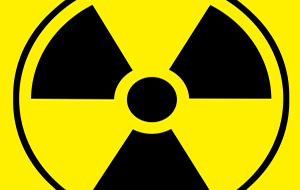

Pigeons can be trained to distinguish between malignant and benign tissues from mammogram and histology images shown on monitors.
You read that right.
Turns out that for certain tasks, some birds have accuracy as high as a trained radiologist, according to a recent study published in the online journal PLoS One.
A study was done investigating whether pigeons could be trained as surrogate observers of medical images with the idea they could be potentially used to help validate new imaging technologies as they are developed.
The development process can be difficult, time-consuming and expensive, and often there aren’t enough trained radiologists to go around, the study authors wrote.
Pigeons were selected because they are known to be good discriminators of complex visual stimuli, and are able to distinguish foreground from background. They can identify misshaped letters of the alphabet and can even distinguish between paintings by Monet and Picasso. They are also known to have excellent visual memory and can recall over 1,800 images.
Overall, “the pigeons were able to generalize what they had learned, so that when we showed them a completely new set of normal and cancerous digitized slides, they correctly identified them,” according to lead author, Dr. Richard Levenson, in a statement from the University of California at Davis. He is professor of pathology and laboratory medicine.
A total of 16 pigeons underwent 15 days worth of training to look at numerous digitized histopathology images as well as mammograms. They were given food rewards when they pecked the colored response button that correctly corresponded to an image that was either benign or malignant. They were exposed to a variety of image resolutions, magnification, colour, hue and brightness differences.
When it came to detecting malignant breast masses in mammograms, studies have shown radiologists have about an 80% accuracy rate. Two pigeons matched that, while others peaked at 60% accuracy.
With respect to distinguishing between malignant and benign histopathology, after two weeks the birds attained 85% accuracy levels.
“Their accuracy, like that of humans, was modestly affected by the presence or absence of colour in the images, as well as by degrees of image compression. The pigeons also learned to correctly identify cancer-relevant microcalcifications on mammograms, but they had a tougher time classifying suspicious masses on mammograms, a task that is extremely difficult, even for skilled human observers,” Dr. Levenson said.
“The birds proved to have a remarkable ability to distinguish benign from malignant human breast histopathology after training with differential food reinforcement;even more importantly, the pigeons were able to generalize what they had learned when confronted with novel image sets,” the authors wrote.
Pigeons aren’t likely to replace radiologists or pathologists, but the researchers see several potential roles for them, including participating in the development of computer-assisted medical image recognition tools.
But one could say the findings are a coo.
A version of this story originally appeared on the site of our sister publication Canadian Healthcare Network.
